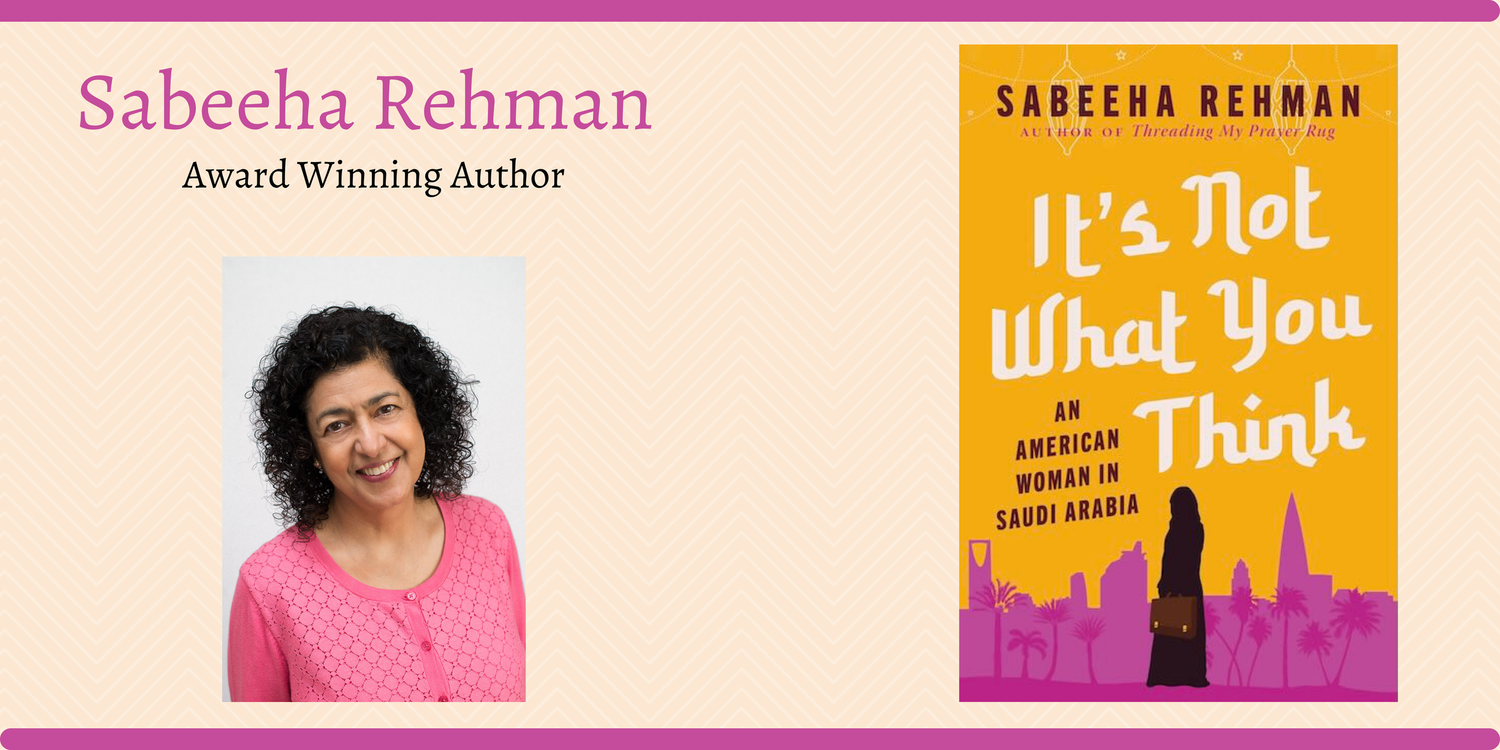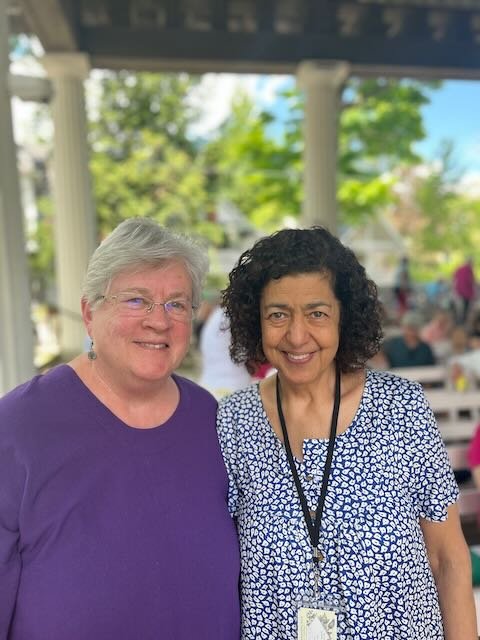“I am a Sufi.”
A woman’s voice from the table behind me.
I was sitting at the breakfast table in the community dining room at The Summer House Inn at Chautauqua Institution with Fawzia and Soraya, my friends since college days in Pakistan. I was telling them the Islam-101 lecture that Khalid and I had given the previous day. Guests at other tables bustled around getting their toasts and coffee.
“I am a Sufi.”
I almost jumped out of my seat, turned around and found myself looking into the serene face of not a brown-skinned Turkish/Pakistani/Irani, but a gray haired, blue-eyed, white woman. She smiled.
Readers, if you are not familiar with the term, Sufism is a mystical expression of Islam, characterized by a focus on spirituality. People of other faiths also embrace Sufi practice, being that it is a spiritual way towards God. The poet Rumi was a Sufi.
“You are a Sufi!” All three of us exclaimed in one voice.
We turned our chairs around and did what women do best. Talked our hearts out. Her name was Mary, and she was once a Catholic nun. For the rest of the week, the four of us were BFFs starting our mornings with Mary giving us Tai Chi instructions in the grove beyond.
“May I interview you for my blog?” I asked one day.
Gracious Mary agreed. So, one morning over breakfast, I sat down with Mary pen and pad in hand.
Mary, what led you to become a Sufi?
It was 13 years ago, during the month of Ramadan when I took an on-line class for Healing Touch practitioners, titled ‘Touching Body, Tending Soul.’ At the time I was a healing touch practitioner and a registered nurse. The teacher, Janet Quinn, RN, PhD, raised Irish-Catholic, is a practicing Sufi. The course took an inter-spirituality approach and included the practices of many faith traditions including Jewish, Christian, and Muslim. For example, how might a nurse work with a diabetic patient, who is Muslim and plans to observe Ramadan.
Janet introduced us to dhikr, the Sufi Ceremony of Divine Remembrance. Chanting La Ila ha IllAllah and Allah Hu 99 times, opened my heart (There is no god, but God). I was drawn to it and visited the Nur Ashki Jerrahi Boulder, Colorado circle. We would sit in a circle, sing illahis (sacred hymns) and chant the names of Allah. I was attracted to the inclusivity of Sufism. You are made to feel welcome, no questions asked. So much about religion has become about the head; Sufism opens the heart.
I joined the Nur Ashki Jerrahi Sufi order—a Turkish order—led by a woman, Shaykha Fariha, in New York. Murshida Habiba is the circle leader of the Boulder, CO circle. She invited me to ‘take hand.’ At first, I did not, but four months later, I accepted the invitation and ‘took hand.’
What does it mean to ‘take hand’? Is there a process?
‘Taking hand’ is an initiation into this particular Sufi order. Different orders have different practices. I decided to ‘take hand’ when Murshida Habiba helped me understand my dreams. There is a ceremony. You take four steps towards the Murshida, accompanied arm in arm by a dervish on either side. The 4 steps are taken slowly and as each step is taken Habiba explained the meaning of each step. After the 4th step, the dervish kneels directly in front of the Murshida and kneeling knee to knee, the dervish and the Murshida join their right hands. At the end of the hand taking, you are given your Sufi name. (for a beautiful, more detailed description of “Taking Hand” in the Nur Ashki Jerrahi order please go to nurashkijerrahi.org )
What is your Sufi name?
Mariam Waduda.
From then on, I went once or twice a year to Colorado to attend dhikr sessions and be a part of the Boulder Sufi circle. During COVID, we did weekly Thursday night sessions on Zoom. This has been so well received we have continued to meet over zoom even when in-person dhikr gatherings resumed since members of the circle live in at least 4 different time zones. Let me show you the Murshida Habiba's photo.
(Mary swiped her phone and I looked into the eyes of a blonde, blue-eyed, white woman in her eighties.)
What compelled you to leave the convent?
I was eighteen-years old when I joined the convent and was a Catholic sister for nine years. I left the community before taking final vows. I was inspired to go into nursing when I witnessed the hospital Sisters of the order, who were nurses, tend to the sick during an outbreak of dysentery. I decided to pursue a career in nursing and was able to obtain my BSN.
Has Sufism had an impact on your profession?
It helps me interact with my clients. As a Healing Touch practitioner, I focus on helping the client’s energy system move into a state of balance that supports the client’s own self-healing. Healing Touch practitioners work out of our own belief system while always holding the belief systems of our clients with reverence. The belief that there is no separation between us helps me to meet my clients where they are, without judgment.
Where does Jesus fit into this belief system?
I asked this question early on, and the response was that Jesus is sitting in the circle with us praying to Allah. And I resonated with that image!
For many years I practiced Catholicism and Sufism. I eventually chose to leave the Catholic church.
Why?
Choosing to leave was difficult. It happened during the pandemic. I was disillusioned with the institution of the Catholic church. It can be very conservative and patriarchal, and I no longer felt nurtured by the faith community. Whereas Vatican II opened up the Catholic church, over time the church seems to have regressed, and it was hard to watch. Now, when some young priests pray, they turn their back to the congregation. It’s hierarchical. I do stay connected with some members of my former parish and with the religious community of women I was a member of many years ago. And I will always treasure my roots in the Roman Catholic tradition.
The Sufi community is now my faith community. I participate in weekly dhikr over Zoom and hope to resume traveling from Cincinnati to Colorado to attend in-person sessions once or twice a year. We are about 20-25 of us in our circle.
An image that speaks to me is a picture, taken some years ago, of members of the Nur Ashki Jerrahi community during a dhikr held in the Cathedral of St. John the Divine in New York. Many Sufis participated including guests from Turkey and led by Shaykh Muzaffer Effendi. I imagine the sound echoing through the Cathedral as those gathered moved in a circle, chanting La Illaha IllAllah.
Do you do the Sufi dance, as in the Whirling Dervish?
Some of the Nur Ashki Jerrahi Sufi circles do move during dhikr and some members have trained in the sacred dance of the whirling dervishes. Some six years ago, I connected with a group in the Columbus, OH area that offers the Dances of Universal Peace. And through this connection I met Neil Douglas-Klotz, (Saadi), a remarkable teacher and guide from a different Sufi tradition and lineage. I was fortunate to attend retreats with him.
My understanding is that most Sufis are Muslim, but also that Sufism has no religious borders. Are you a Muslim?
I do not consider myself a Muslim. Most Sufi orders, as I understand it, do have roots in Islam. I start my prayer with the Islamic recital: BismAllah Ar Rahman Ar Rahim (In the name of God, the Compassionate, the Merciful). I have studied the mystics of several traditions. At times I have performed the Salat (Muslim prayer). And I recite the 99 attributes of Allah as part of some of my prayers. It helps me fall sleep at night; my Alhamdulillah moment (All Praise to God). Check out this book, Physicians of the Heart: A Sufi View of the 99 Names of Allah.
I will.
“There you are,” Fawzia and Soraya had walked up.
“Is it time?” Mary asked, looking at her watch. “Let’s go.”
And off we went, following her into the grove for our daily morning Tai Chi instruction.
*****************
Many thanks to Mary M. Duennes for sharing her story. A Healing Touch Certified Practitioner/Qualified Mentor, you can look her up at: www.Healingtouchprogram.com
The Tai Chi that she teaches can be found on the www.capacitar.org website.
To learn more about Sufism, read here.




